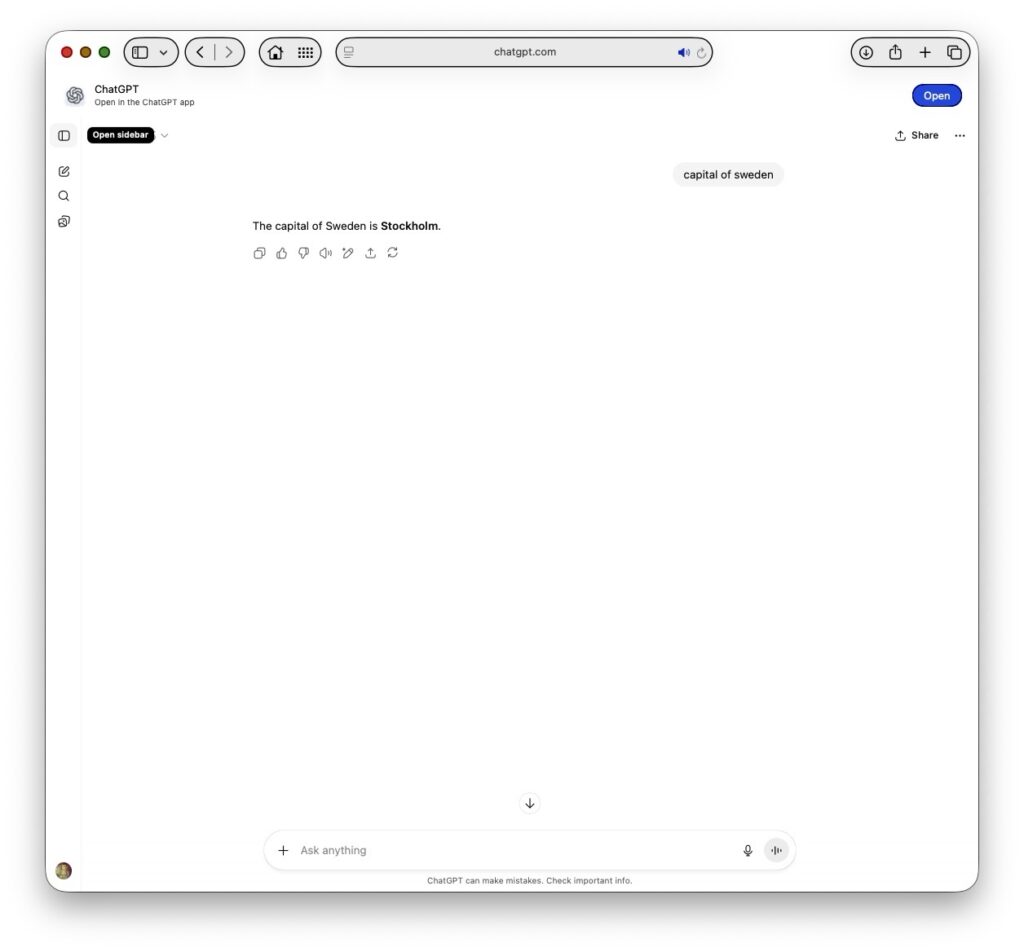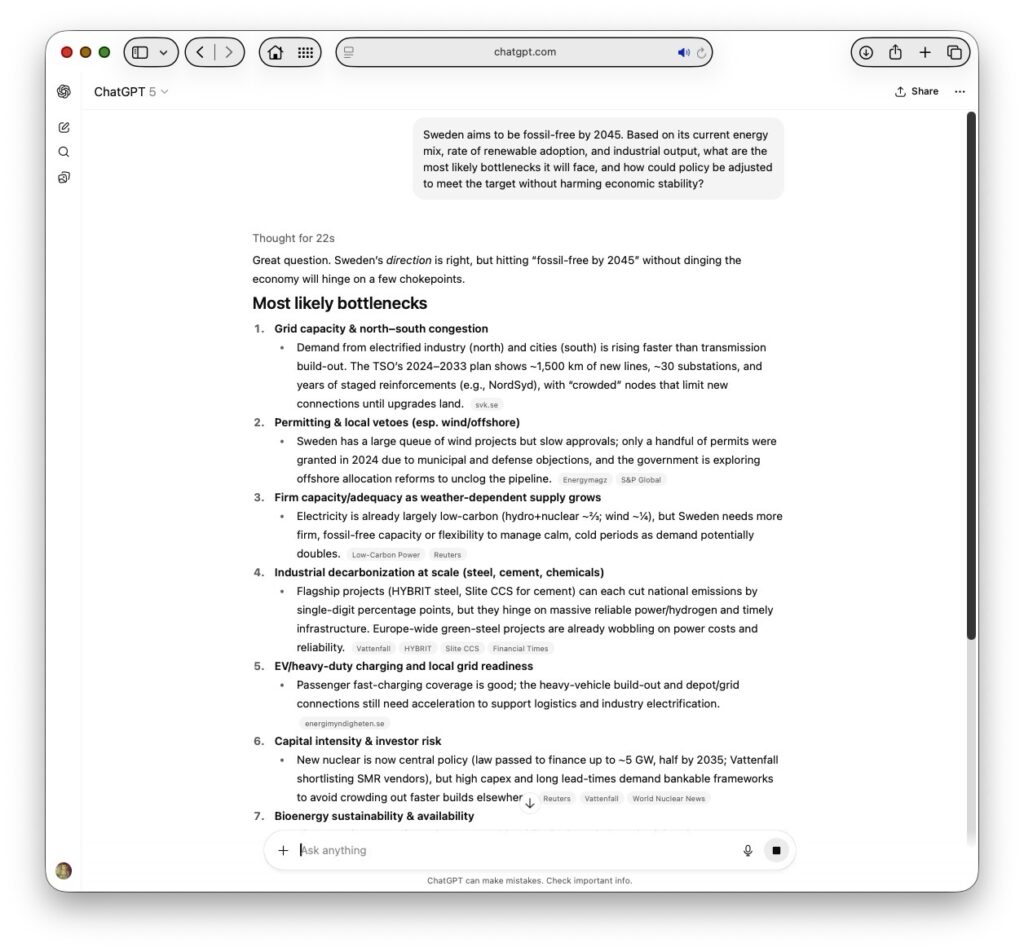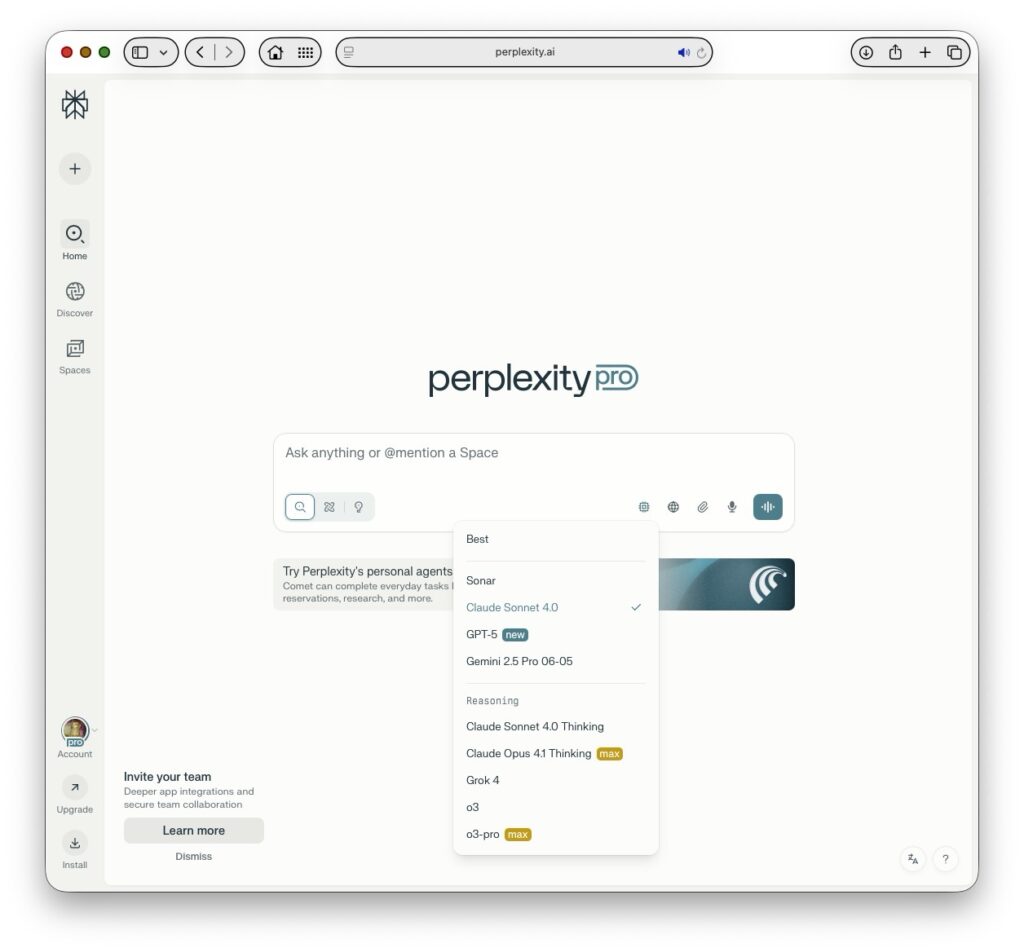ChatGPT 5’s Unified Routing System vs. Perplexity
The Old Problem: Picking Models Yourself
In past AI chats (including earlier ChatGPT versions), you had to guess which model to use. Fast but shallow? Slow but deep? Plus, who knows the difference between this -mini model or that “deep research” one. You choose, and just hope that you’re right.
Now imagine asking any question—quick fact, layered logic puzzle, or off-the-wall creative request—and always getting the right kind of answer, without worrying which model is quietly doing the work.
That’s the promise of ChatGPT 5’s Unified Routing System.
How It Works
One Smart Interface – No more picking between “fast” and “deep” models. ChatGPT 5 chooses in real time.
Adaptive Reasoning – It scans your prompt for complexity and intent. Quick request? Instant speed. Big-picture challenge? Expert-level reasoning.
Learns Your Style – Over time, it refines its routing logic based on your conversations, so future answers match your needs.
Why it matters: You get relevant, well-matched answers with zero mental overhead—whether you’re brainstorming, debugging, or exploring nuanced ideas.


Perplexity: Multi-Model Mastery
Perplexity has offered similar functionality for some time, with its more transparent, “buffet-style” approach. Perplexity has its own LLM, called Sonar, that’s primarily focused on getting real-time Internet search results in chats. Plus, you can pick from a rotating lineup—GPT-4o, Claude Sonnet, Gemini Pro, Sonar, R1, and more, or let it decide for you. It defaults to “Best” model, letting it choose for you. I’m betting most casual Perplexity users never knew the choice existed, and have been using “Best” by default.
How it routes:
Dynamic Orchestration – Sends your query to the engine most likely to nail it.
Manual Override – Pro users can hand-pick a model for style, accuracy, or preference.
Full Citations – Every answer comes with sources—perfect for research-heavy work.

ChatGPT 5 Routing vs. Perplexity “Best”
| Feature | ChatGPT 5 Routing | Perplexity “Best” Routing |
| User Control | Fully automatic | Auto by default; manual for Pro users, if needed |
| Transparency | Limited citations, internal knowledge | Always cited, real-world sources |
| Model Choices | Unified fast + deep reasoning | Multiple selectable engines |
| Learning | Improves with user feedback | RL-based, query-task matching |
Which to Choose?
- Choose ChatGPT 5 for frictionless, conversational help in brainstorming, writing, and problem-solving.
- Choose Perplexity for transparent, source-backed answers in research, fact-checking, or technical work.
Both are racing toward smarter routing, multimodal tools, and tighter integrations—good news for creators, researchers, and anyone tired of fiddling with settings, and convoluted prompt engineering set ups.
What’s Your Experience?
I’m curious. Those of you who regularly use or play with multiple LLMs, and seriously, doesn’t everyone do that, what has been your experience with the new ChatGPT 5 system, compared to Perplexity Pro, if you use that as well?
